-
 "Learn all you can about the German Army and one day you will be a valuable man to your country." These words were spoken to young Alexander Scotalnd by Major Wade, a British liaison officer in German West Africa in 1904. He never forgot those words. This book covers how much he learnt and how valuable were his services to his country. This young man served in the German Army - at the suggestion of the Germans - for the duration of the Hottentot Rebellion, thereby gaining an intimate knowledge of the organisation and strengths of the German military machine. He grew to know, by close contact, the habits, language and mental outlook of the German soldier. This knowledge was the basis of his achievements in espionage, interrogation and undercover work in two world wars. His reputation led to a strange meeting with Adolf Hitler in 1937, at the home of a mutual friend. His career reached its zenith in 1947 when - as Chief Officer of the War Crimes Investigation Unit, he played a decisive role in bringing Nazi war criminals to justice. Illustrated with black and white photographs.
"Learn all you can about the German Army and one day you will be a valuable man to your country." These words were spoken to young Alexander Scotalnd by Major Wade, a British liaison officer in German West Africa in 1904. He never forgot those words. This book covers how much he learnt and how valuable were his services to his country. This young man served in the German Army - at the suggestion of the Germans - for the duration of the Hottentot Rebellion, thereby gaining an intimate knowledge of the organisation and strengths of the German military machine. He grew to know, by close contact, the habits, language and mental outlook of the German soldier. This knowledge was the basis of his achievements in espionage, interrogation and undercover work in two world wars. His reputation led to a strange meeting with Adolf Hitler in 1937, at the home of a mutual friend. His career reached its zenith in 1947 when - as Chief Officer of the War Crimes Investigation Unit, he played a decisive role in bringing Nazi war criminals to justice. Illustrated with black and white photographs. -
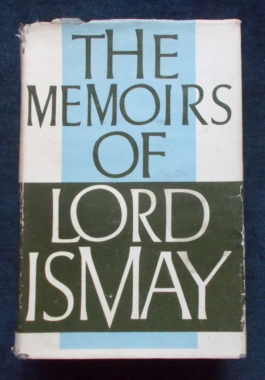 The appointment of Major-General H.L. Ismay to the Chiefs of Staff Committee was made on May 1st, 1940, when Churchill was First Lord of the Admiralty. On May 10th he succeeded Chamberlain as Prime Minister and Ismay's position at once became of the first importance. His functions were ill defined. He liked to call himself Churchill's "agent"; but he was very much more than that term usually implies. Out of his close association with the Prime Minister there grew a deep understanding and friendship. Accompanying him everywhere from blitzed areas in London to major conferences all over the world, or sharing with him his moments of relaxation after the heat of the day, Ismay had unique opportunities to observe the Colossus who was his master and his memoir paints a full portrait of Churchill. In 1925 Ismay was appointed Assistant Secretary to the Committee of Imperial defence. By the outbreak of the Second World War he was very experienced in committee work. The waging of total war in a democracy is a complex business: committees and conferences have to do their work, temperaments have to be reconciled and methods of implementing decisions arrived at. It is this aspect of the war covered by Lord Ismay. He was important as a peacemaker and mediator; there was no lack of potential friction between the Chiefs of Staff and their political superiors in World War II and the fact that this friction remained largely potential was largely due to Ismay. After his years in India, Somaliland and Whitehall and his work in World War II, he returned post-war to India as the personally invited advisor to the Viceroy, Lord Mountbatten, to contribute to the settlement of Partition, and after its successful conclusion Lord Ismay crowned his career of public service as the head of the North Atlantic Treaty Organization (NATO) where he strove to prevent a future war with the same energy as he had helped to win the past one.
The appointment of Major-General H.L. Ismay to the Chiefs of Staff Committee was made on May 1st, 1940, when Churchill was First Lord of the Admiralty. On May 10th he succeeded Chamberlain as Prime Minister and Ismay's position at once became of the first importance. His functions were ill defined. He liked to call himself Churchill's "agent"; but he was very much more than that term usually implies. Out of his close association with the Prime Minister there grew a deep understanding and friendship. Accompanying him everywhere from blitzed areas in London to major conferences all over the world, or sharing with him his moments of relaxation after the heat of the day, Ismay had unique opportunities to observe the Colossus who was his master and his memoir paints a full portrait of Churchill. In 1925 Ismay was appointed Assistant Secretary to the Committee of Imperial defence. By the outbreak of the Second World War he was very experienced in committee work. The waging of total war in a democracy is a complex business: committees and conferences have to do their work, temperaments have to be reconciled and methods of implementing decisions arrived at. It is this aspect of the war covered by Lord Ismay. He was important as a peacemaker and mediator; there was no lack of potential friction between the Chiefs of Staff and their political superiors in World War II and the fact that this friction remained largely potential was largely due to Ismay. After his years in India, Somaliland and Whitehall and his work in World War II, he returned post-war to India as the personally invited advisor to the Viceroy, Lord Mountbatten, to contribute to the settlement of Partition, and after its successful conclusion Lord Ismay crowned his career of public service as the head of the North Atlantic Treaty Organization (NATO) where he strove to prevent a future war with the same energy as he had helped to win the past one. -

The author has written the full length story of the Malayan campaign of World War II from the 'sharp end' of the fighting and as a prisoner-of-war, one of thousands who suffered for three years. He takes the reader through bewildering, disordered days and nights of fighting to humiliation at the hands of the Japanese, versed in all the arts of abasing and breaking prisoners by starvation and neglect. The illustrations by fellow prisoner Ronald Searle (St. Trinians, Down With Skool,Whizz For Atomms, How To Be Top, etc.) are poignant, forceful and make reality even more real. This really is war and imprisonment as it happened.
-
 A volume of military activity, weaponry and technology from 1987. Arenas of activity covered: The Middle East - Tripoli; Lebanon; the Gulf War; South Yemen and the Arab-Israeli conflict. Europe, North America and the Soviet Union: Terrorism and Power Politics; The Superpower Relationship; NATO and the Warsaw Pact; International Terror; Northern Ireland. Asia - Islam's Guerrillas; The Tamil Tigers; The Philippines; Vietnam and Cambodia' Sikh Separatists. Africa - South Africa; Mozambique; Angola; Chad; The Sudan; Ethiopia; The Boy Soldiers of Uganda. Latin America: Guerrillas and Contras; El Salvador; Nicaragua; Peru; Chile. Military Technology: The War Machine; Aerial Warfare; Space and Missiles; Land Warfare; Naval Warfare. A wealth of information for the war history buff with plenty of colour photographs.
A volume of military activity, weaponry and technology from 1987. Arenas of activity covered: The Middle East - Tripoli; Lebanon; the Gulf War; South Yemen and the Arab-Israeli conflict. Europe, North America and the Soviet Union: Terrorism and Power Politics; The Superpower Relationship; NATO and the Warsaw Pact; International Terror; Northern Ireland. Asia - Islam's Guerrillas; The Tamil Tigers; The Philippines; Vietnam and Cambodia' Sikh Separatists. Africa - South Africa; Mozambique; Angola; Chad; The Sudan; Ethiopia; The Boy Soldiers of Uganda. Latin America: Guerrillas and Contras; El Salvador; Nicaragua; Peru; Chile. Military Technology: The War Machine; Aerial Warfare; Space and Missiles; Land Warfare; Naval Warfare. A wealth of information for the war history buff with plenty of colour photographs. -
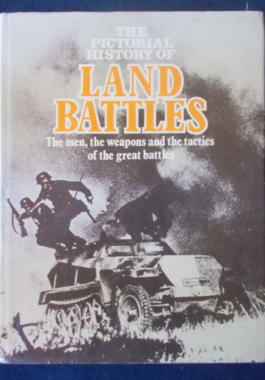 A book full of information, pictures and maps of land battles throughout history that proves it was not always about who had the biggest army. In this volume - Metaurus - after the toughest forced march in history, Nero slays Hasdrubal; Agincourt - massed archers and infantry slaughter the French cavalry; Bunker Hill - a thousand farmers ignite the flame of American independence; Austerlitz - Napoleon crushes an army bigger than his own; Balaclava - a battle of idiocy and sheer courage; Second Bull Run - a high spot for the South in the American Civil War; The Somme - slaughter on a scale never seen before or since; Cambrai - tanks explode into action for the first time; Gazala - Rommels' fast moving tactical brilliance; Stalingrad - Hitler's obstinacy leads the Wehrmacht to disaster; Cassino and Anzio - Allied forces combine to force a breakthrough; The Battle Of The Bulge - fast moving Panzers against Eisenhower, Montgomery and Patton; Operation Commando - a true 'United Nations; against the Chinese in Korea. Illustrated with archival photographs, artists' representations and maps.
A book full of information, pictures and maps of land battles throughout history that proves it was not always about who had the biggest army. In this volume - Metaurus - after the toughest forced march in history, Nero slays Hasdrubal; Agincourt - massed archers and infantry slaughter the French cavalry; Bunker Hill - a thousand farmers ignite the flame of American independence; Austerlitz - Napoleon crushes an army bigger than his own; Balaclava - a battle of idiocy and sheer courage; Second Bull Run - a high spot for the South in the American Civil War; The Somme - slaughter on a scale never seen before or since; Cambrai - tanks explode into action for the first time; Gazala - Rommels' fast moving tactical brilliance; Stalingrad - Hitler's obstinacy leads the Wehrmacht to disaster; Cassino and Anzio - Allied forces combine to force a breakthrough; The Battle Of The Bulge - fast moving Panzers against Eisenhower, Montgomery and Patton; Operation Commando - a true 'United Nations; against the Chinese in Korea. Illustrated with archival photographs, artists' representations and maps. -
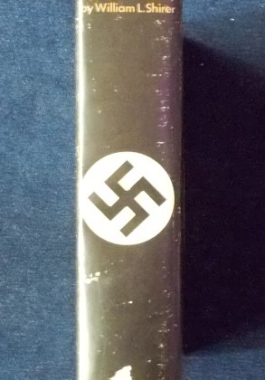
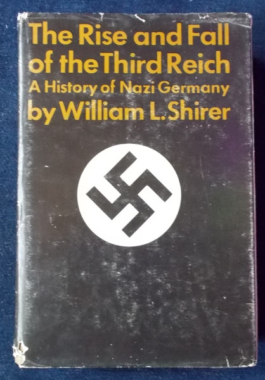
Here for the first time is the complete history of Hitler's empire. No other empire ever bequeathed to historians such mountains of evidence about its rise and fall as the Third Reich. The Allied demand for unconditional surrender produced - before the Nazis could destroy their files - an almost hour-to-hour record of the nightmare realm created by Hitler. This record includes the testimony of Nazi leaders, concentration camp inmates, the diaries of officials, transcripts of secret conferences, army orders, private letters - all the vast paper work behind a conspiracy to conquer the world. This is also the story of Hitler the man - his love affairs, his imprisonment, his suicide. There is also details of the plot to kidnap the Duke and Duchess of Windsor and hundreds of other inside stories. Most of all, it is the story of how Hitler destroyed his beloved Germany. The author, who watched and reported on the Nazis since 1925 had been reporting on-the-spot from Germany and Europe for almost forty years and spent over five years sifting the mountains of paper that eventually became this definitive history.
-
 World War II gave rise to an astonishing number of unorthodox 'special forces' yet this is the first book to assess their contribution to the final victory or how they related to one another and to the more conventional fighting forces. In 1939 'Special Forces' did not exist; it was Churchill who ordered them to 'set Europe ablaze'. Operating under the cloak of secrecy during wartime and quickly disbanding after it they have not often received credit for their achievements. From early 'butcher and bolt' raids by parachutists and commandos to SOE activities in the Balkans and France; 'Merrill's Marauders' and Windgate's Chindits in Burma, Special Forces were active in all great theatres of war. They played a vital role in intelligence-gathering, Anglo-American co-operation, sabotage, the fostering of local resistance movements and guerilla fighting. They denied 'heavy water' to Germany, making it impossible for that country to manufacture an atomic bomb and crucially affected the balance of air power in the Western Desert in 1942. Here are survivors' stories - courageous men and women, many of whom have become legendary. With black and white photographs.
World War II gave rise to an astonishing number of unorthodox 'special forces' yet this is the first book to assess their contribution to the final victory or how they related to one another and to the more conventional fighting forces. In 1939 'Special Forces' did not exist; it was Churchill who ordered them to 'set Europe ablaze'. Operating under the cloak of secrecy during wartime and quickly disbanding after it they have not often received credit for their achievements. From early 'butcher and bolt' raids by parachutists and commandos to SOE activities in the Balkans and France; 'Merrill's Marauders' and Windgate's Chindits in Burma, Special Forces were active in all great theatres of war. They played a vital role in intelligence-gathering, Anglo-American co-operation, sabotage, the fostering of local resistance movements and guerilla fighting. They denied 'heavy water' to Germany, making it impossible for that country to manufacture an atomic bomb and crucially affected the balance of air power in the Western Desert in 1942. Here are survivors' stories - courageous men and women, many of whom have become legendary. With black and white photographs. -
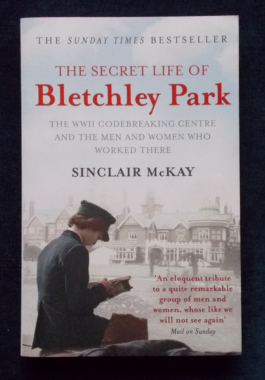 Bletchley Park was where one of Word War II's most famous and crucial achievements was made: the cracking of Germany's Enigma code in which its most important military communications were couched. This country house was home to Britain's most brilliant mathematical brains - including Alan Turing - and the scene of immense advances in technology...indeed, the birth of modern computing. The military codes deciphered there were instrumental in turning both the Battle of the Atlantic and the war in North Africa. Plenty has been written about the scientists and the code-breaking, in both fact and fiction, from Robert Harris and Ian McEwan to Andrew Hodges' biography of Turing. But what of the thousands of men and women who lived and worked there during World War II? This is not only a history of life at Bletchley Park; this is also an amazing compendium of memories from people now in their eighties of skating on the frozen lake in the grounds and the high jinks at nearby accommodation hostels - and of the implacable secrecy that meant girlfriend and boyfriend working in adjacent huts knew nothing about each other's work. Illustrated with black and white photographs.
Bletchley Park was where one of Word War II's most famous and crucial achievements was made: the cracking of Germany's Enigma code in which its most important military communications were couched. This country house was home to Britain's most brilliant mathematical brains - including Alan Turing - and the scene of immense advances in technology...indeed, the birth of modern computing. The military codes deciphered there were instrumental in turning both the Battle of the Atlantic and the war in North Africa. Plenty has been written about the scientists and the code-breaking, in both fact and fiction, from Robert Harris and Ian McEwan to Andrew Hodges' biography of Turing. But what of the thousands of men and women who lived and worked there during World War II? This is not only a history of life at Bletchley Park; this is also an amazing compendium of memories from people now in their eighties of skating on the frozen lake in the grounds and the high jinks at nearby accommodation hostels - and of the implacable secrecy that meant girlfriend and boyfriend working in adjacent huts knew nothing about each other's work. Illustrated with black and white photographs. -
 In many ways, the Digger is a study in contradictions: he doesn't crave war, yet he will fight with unequalled ferocity; he hates spit and polish but will hold his discipline under the most trying conditions; he is tough, yet compassionate; he hates his enemy until he surrenders, then is generous in victory; he despises histrionics but will cry unashamedly at the loss of a mate...The Digger is a key piece of the complex jigsaw puzzler that makes up 'The Australian' - but who is the Digger, exacatly? What elements have gone into forging his spirit?They have won acclaim for their fighting prowess and bravery, while retaining their larrikin spirit, their compassion and their strong sense of mateship. Those who fought in the trenches of Gallipoli, the Somme and Ypres have an immediate kinship with those who followed in NorthAfrica and New Guinea; then later in Korea, Vietnam, East Timor, Iran and Iraq. Australians can be proud of the heritage our Diggers have bequeathed to us. Illustrated with black and white photos.
In many ways, the Digger is a study in contradictions: he doesn't crave war, yet he will fight with unequalled ferocity; he hates spit and polish but will hold his discipline under the most trying conditions; he is tough, yet compassionate; he hates his enemy until he surrenders, then is generous in victory; he despises histrionics but will cry unashamedly at the loss of a mate...The Digger is a key piece of the complex jigsaw puzzler that makes up 'The Australian' - but who is the Digger, exacatly? What elements have gone into forging his spirit?They have won acclaim for their fighting prowess and bravery, while retaining their larrikin spirit, their compassion and their strong sense of mateship. Those who fought in the trenches of Gallipoli, the Somme and Ypres have an immediate kinship with those who followed in NorthAfrica and New Guinea; then later in Korea, Vietnam, East Timor, Iran and Iraq. Australians can be proud of the heritage our Diggers have bequeathed to us. Illustrated with black and white photos. -
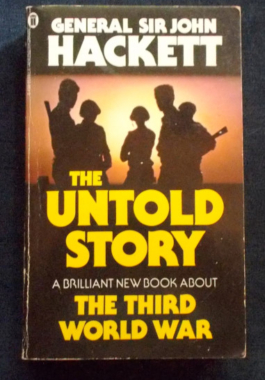 Hackett's first book, The Third World War: August 1985 sold 3,000,000 copies world wide and received great critical acclaim. This new book tells the rest of the story, using much new material, including declassified NATO reports and many hitherto unexplored episodes. It gives the inside story of how the war was planned in Moscow and experienced on the battlefield by the Warsaw Pact forces. Hackett re-examines his hypothetical scenario for World War III, incorporating the technological advances made in the four years since the publication of his first book.
Hackett's first book, The Third World War: August 1985 sold 3,000,000 copies world wide and received great critical acclaim. This new book tells the rest of the story, using much new material, including declassified NATO reports and many hitherto unexplored episodes. It gives the inside story of how the war was planned in Moscow and experienced on the battlefield by the Warsaw Pact forces. Hackett re-examines his hypothetical scenario for World War III, incorporating the technological advances made in the four years since the publication of his first book. -
 The Von Bock memoirs allow the reader to see the entire drama of the Second World War through the eyes of one of Germany's most important military commanders. After the attacks on Poland and Western Europe, campaigns that he helped bring to a successful conclusion, Von Bock became Commander-in-Chief of Army Group Center which carried out the main drive on Moscow during Operation Barbarossa and brought the Red Army to the verge of collapse. Hitler relieved Von Bock when the German offensive bogged down during the winter of 1941/1942. After he returned as Commander-in-Chief of Army Group South, Von Bock was eventually placed in temporary 'retirement' when he critised Hitler's division of forces against Stalingrad and the Caucasus - and the road to catastrophe began. Army commanders like Hoth, Guderian, Kluge and Paulus served under Von Bock, while at his side was his nephew Henning von Tresckow, who led the most active resistance movement against Hitler, and Carl-Hans von Hardenberg, a friend and advisor of Von Stauffenberg. Their efforts to win him over to the resistance failed, yet Von Bock the pronounced resistance sentiments among his staff, and even became privy to the attempted assassination of Hitler on July 20, 1944. This book allows us to reassess Fedor Von Bock, whose complex personality is revealed by his diary entries.
The Von Bock memoirs allow the reader to see the entire drama of the Second World War through the eyes of one of Germany's most important military commanders. After the attacks on Poland and Western Europe, campaigns that he helped bring to a successful conclusion, Von Bock became Commander-in-Chief of Army Group Center which carried out the main drive on Moscow during Operation Barbarossa and brought the Red Army to the verge of collapse. Hitler relieved Von Bock when the German offensive bogged down during the winter of 1941/1942. After he returned as Commander-in-Chief of Army Group South, Von Bock was eventually placed in temporary 'retirement' when he critised Hitler's division of forces against Stalingrad and the Caucasus - and the road to catastrophe began. Army commanders like Hoth, Guderian, Kluge and Paulus served under Von Bock, while at his side was his nephew Henning von Tresckow, who led the most active resistance movement against Hitler, and Carl-Hans von Hardenberg, a friend and advisor of Von Stauffenberg. Their efforts to win him over to the resistance failed, yet Von Bock the pronounced resistance sentiments among his staff, and even became privy to the attempted assassination of Hitler on July 20, 1944. This book allows us to reassess Fedor Von Bock, whose complex personality is revealed by his diary entries. -
 What possessed the German people to embrace Hitler and his politics of mass murder? The author, an eminent historian, points to Goebbels' brilliant manipulation of the mass murderer as the key to the Fuhrer's success. Goebbels' diabolical propaganda machine exploited all communication: radio, posters, magazines, documentaries, brochures and spectacular films in the drive to capture the minds of millions. By the use of patriotic myth and tradition, a nation fell under a mass hypnosis on a scale never before paralleled. Illustrated with black and white photos.
What possessed the German people to embrace Hitler and his politics of mass murder? The author, an eminent historian, points to Goebbels' brilliant manipulation of the mass murderer as the key to the Fuhrer's success. Goebbels' diabolical propaganda machine exploited all communication: radio, posters, magazines, documentaries, brochures and spectacular films in the drive to capture the minds of millions. By the use of patriotic myth and tradition, a nation fell under a mass hypnosis on a scale never before paralleled. Illustrated with black and white photos. -
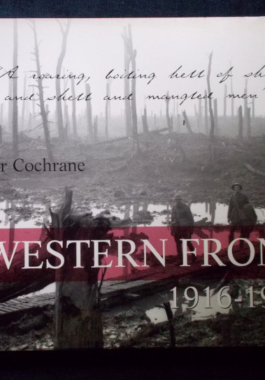 A fascinating, unsettling and unforgettable view of one of the most compelling events in modern history. For all the significance attached to the doomed heroism at Gallipoli, the Western Front was the single greatest wartime tragedy that elicited the greatest sacrifice. Of the 61,720 who died in the course of the war, 46,319 were lost at the Western Front. In a matter of weeks, more Australians were slain in or or two battles than in the entire eight months at Gallipoli. Those terrible years, 1916 to 1918, represent the whole panoply of modern warfare. This is an examination of the record of official and unofficial images in unexpected ways. It looks at the major battles of the campaign, the grim conditions endured by the soldiers, the workers of the massive support system, the valiant efforts of stretcher-bearers and medical workers and, finally, the run of victories under Monash in which Australian soldiers distinguished themselves above and beyond their numerical presence. Illustrated with black and white photographs.
A fascinating, unsettling and unforgettable view of one of the most compelling events in modern history. For all the significance attached to the doomed heroism at Gallipoli, the Western Front was the single greatest wartime tragedy that elicited the greatest sacrifice. Of the 61,720 who died in the course of the war, 46,319 were lost at the Western Front. In a matter of weeks, more Australians were slain in or or two battles than in the entire eight months at Gallipoli. Those terrible years, 1916 to 1918, represent the whole panoply of modern warfare. This is an examination of the record of official and unofficial images in unexpected ways. It looks at the major battles of the campaign, the grim conditions endured by the soldiers, the workers of the massive support system, the valiant efforts of stretcher-bearers and medical workers and, finally, the run of victories under Monash in which Australian soldiers distinguished themselves above and beyond their numerical presence. Illustrated with black and white photographs. -
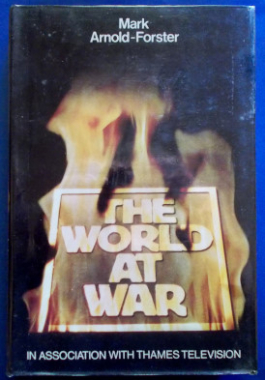
World War II, the most massive and appalling military conflagration in history began on September 1, 1939 when Hitler's troops invaded Poland and from there, it spread inexorably in all directions. On December 7 1941, the Japanese bombed Pearl Harbour, thus bringing the huge American armies into the picture and the Pacific was ablaze as Japan and America fought a devastating island-hopping war across the ocean. As well as swallowing millions of lives, the demands of the military machine gave rise to the atom bomb and the computer; the British Empire was dying but the Commonwealth was heralded; the war made Churchill and the 'spiv'; it created rationing and the Welfare State; it slaughtered 6,000,000 Jews, broke marriages and laid waste to the European economy. This is a graphic account of the fateful years that changed the world forever. Illustrated with black and white photos.
-
 To many people the most glamorous of aeroplanes is the fighter, by the idea of men flying alone high above the earth in the open cockpit of First World War aircraft, as they fought the gaily-coloured Fokker, Albatross and Pfalz of the German Air Service. This 'feeling for the fighter' was strengthened in 1940 when the Hurricanes and Spitfires of the Royal Air Force saved Britain from German invasion. This book describes the fighters of both wars; there is also the entire development of the fighter from its primitive beginnings up to the supersonic age. The most significant fighters of Britain, France, Germany, Italy, the United States, Japan and the U.S.S.R. are among those featured. Illustrated with black and white photos.
To many people the most glamorous of aeroplanes is the fighter, by the idea of men flying alone high above the earth in the open cockpit of First World War aircraft, as they fought the gaily-coloured Fokker, Albatross and Pfalz of the German Air Service. This 'feeling for the fighter' was strengthened in 1940 when the Hurricanes and Spitfires of the Royal Air Force saved Britain from German invasion. This book describes the fighters of both wars; there is also the entire development of the fighter from its primitive beginnings up to the supersonic age. The most significant fighters of Britain, France, Germany, Italy, the United States, Japan and the U.S.S.R. are among those featured. Illustrated with black and white photos. -

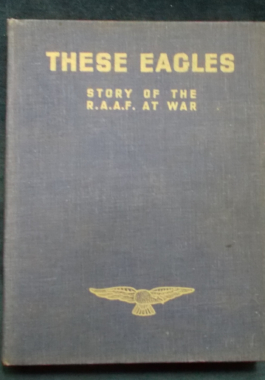 With stories, sketches and photographs from the servicemen and women of the Royal Australian Air Force. No 'Boys Own' adventures here - these are real tales of man's condition, actions and reactions in wartime. From Out Of Control: To watch Mother Earth rushing up to meet you while you are fighting a spine at a mere few thousand feet does not increase your expectation of a long and useful life... There's the ground crew blokes, the high-altitude men, the U-boat spotters, the Old New Contemptibles; the ladies of the W.A.A.A.F get a salute from the boys. There's even cartoons - such as one would expect from an Aussie view of things. Illustrated with sketches, black and white photographs and colour plates.
With stories, sketches and photographs from the servicemen and women of the Royal Australian Air Force. No 'Boys Own' adventures here - these are real tales of man's condition, actions and reactions in wartime. From Out Of Control: To watch Mother Earth rushing up to meet you while you are fighting a spine at a mere few thousand feet does not increase your expectation of a long and useful life... There's the ground crew blokes, the high-altitude men, the U-boat spotters, the Old New Contemptibles; the ladies of the W.A.A.A.F get a salute from the boys. There's even cartoons - such as one would expect from an Aussie view of things. Illustrated with sketches, black and white photographs and colour plates. -
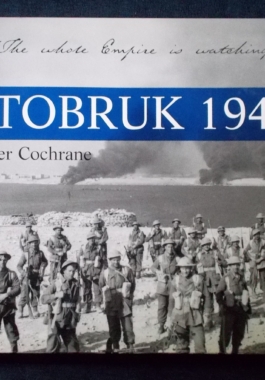
Tobruk 1941: Peter Cochrane
$15.00No surrender...no retreat. When the 9th Division of the AIF withdrew into the desert fortress town of Tobruk in April 1941, a siege began that would make its mark on the course of World War II and the popular memory of a nation. The siege was intended to last no longer than two months, but ultimately extended to eight. Under the command of Morshead, the Allied troops employed an aggressive, daring defence that put a sizeable dent ion Rommel's aura of invincibility. The defiant Aussie diggers distinguished themselves through their determination and unquenchable cheerful spirit. The success of the Rats of Tobruk inspired hope for the possibility of effective resistance in the midst of the darkest days of the war. Illustrated with archival black and white photographs.
















